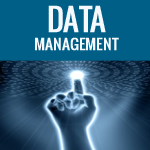Employees working remotely is something 
of a divisive subject in the world of business right now.
On the one hand, figures show more and more companies are
giving employees the opportunity to take advantage of flexible
working hours in the hope this will boost staff morale and increase productivity.
And working remotely is now easier than ever given the power and range
of portable devices and the proliferation of conference call providers
and video conferencing tools available.
On the other hand, big businesses such as Yahoo and, more recently,
HP have put a stop to employees working from home, and turned the flexible
working theory on its head by suggesting workers are more productive and
better ideas are generated when everyone is in the office.
No matter what side of the work-from-home-fence you sit on, something that is of
vital importance to all business is data security – and keeping data secure becomes all
the more difficult when you have employees working from home, particularly
if you’re unsure exactly who is working from home.
So the first thing you need to do to help keep your data secure is find
out who is working from home and when.
Identifying the invisible workers
When given the option to work from home, employers will usually put various systems and
security measures in place, such as secure network access, password protected
equipment and guidelines on how to treat sensitive information.
And this is a system that usually works well, even to the point that employees working
from home can often be more productive than their office based counterparts
as they spend more time at their computer.
However, problems can arise when employees start taking unfinished work home
with them in the evening or at the weekend as this means there are a legions of employees
taking laptops and devices loaded with data of the premises without authorisation.
A recent study found that half (50%) of these ‘invisible workers’ send and receive documents
to and from their personal email accounts, over a quarter (29%) leave work documents lying
around the house, while a further 19% will throw work papers that are no longer required
in the home dustbin. This means anyone can get their hands on potentially sensitive data.
Then there’s the problem of working in coffee shops and connecting to an unlocked network
(7% admit to doing this) meaning all data stored on their device is vulnerable to
exposure and result in data breaches.
So the first thing you need to do is identify your home workers, particularly those ‘invisible workers’
and warn them of the dangers outlined above. However, remember these workers will be doing
this with the best of intentions and so you shouldn’t be hard on them, just outline the risks.
At this point, you should also educate the entire workforce on the importance of
data security and the inherent risks of working away from the office,
particularly when working over unsecured networks.
Make sure all devices are protected
When you have staff taking devices away from the workplace, it’s imperative they’re protected
against hackers and malware infection so make sure all hardware has the latest security software
installed and regularly updated and also ensure there are restrictions on the type of sites
employees can access and the type of applications they can download.
And don’t rely on employees to update the anti-virus software,
install software that comes with automatic updates.
To protect against damage caused by misplaced devices, make sure everything is password protected
and all disks are encrypted to stop any unauthorised parties’ from accessing data. It’s also a good
idea to install applications that can remotely erase data if the device is lost or gets into malicious hands.
If employees are accessing the work network remotely then make sure access is secure,
by using virtual private network (VPN) software with adequate firewalls that
can identify signs of infection or malware attacks.
Try to avoid using cloud software – although this will probably be the most convenient
way of remote working and is generally safe, you’ll be putting valuable data in the hands
of a third party and even giant corporations aren’t entirely safe from security
breaches, as the Sony PSN attack proved.
Author Bio
Article by Les Roberts, freelance journalist and editor of the ConferenceCall.co.uk blog –
offering the best conference call tips and guides as well as the latest
from the world of tech and working from home.
